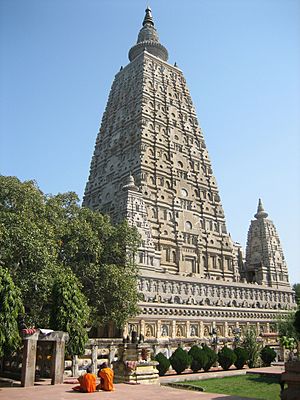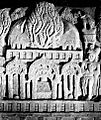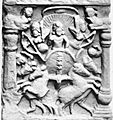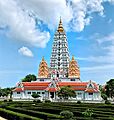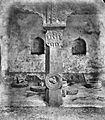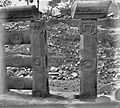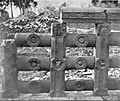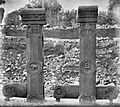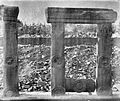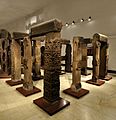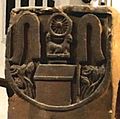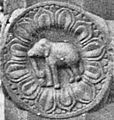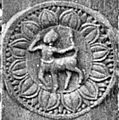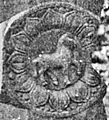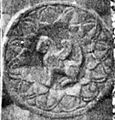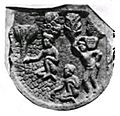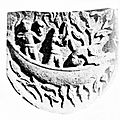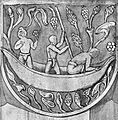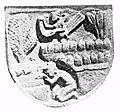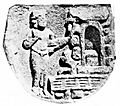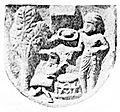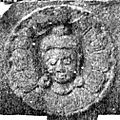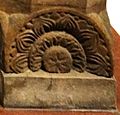Mahabodhi Temple facts for kids
The Mahabodhi Temple is a very old and important Buddhist temple in Bodh Gaya, India. Its name means "Great Awakening Temple." This special place is where Buddha is believed to have reached enlightenment. Enlightenment means a state of deep understanding and wisdom.
The temple is a UNESCO World Heritage Site. This means it's recognized by the United Nations as a place that is important for everyone in the world. The site also has a tree that grew from the original Bodhi Tree where Buddha found enlightenment. For over two thousand years, the Mahabodhi Temple has been a major pilgrimage spot. A pilgrimage is a special journey to a holy place. Both Hindus and Buddhists visit this temple. Some parts of the temple might even date back to the time of Emperor Ashoka, who lived around 232 BCE. It is known as the "National Buddhist temple of India."
Contents
History of the Mahabodhi Temple
The First Temple and Ashoka
The first temple at Bodh Gaya was built by Emperor Ashoka the Great. This was around 250 BCE. Ashoka was a powerful ruler who became a Buddhist. He wanted to honor the place where Buddha became enlightened. He built a small shrine and a special stone platform called the Diamond throne. This platform marked the exact spot of Buddha's enlightenment.
Later Buildings and Changes
Over many centuries, the temple was rebuilt and expanded. The main structure we see today was likely built during the Gupta period, around the 5th or 6th century CE. This was a time when art and architecture in India were very advanced. The temple has a tall, pyramid-like tower. It is a classic example of Indian temple architecture.
Restoration and Modern Times
The Mahabodhi Temple has been restored many times throughout its history. It faced damage from natural events and invasions. In the late 19th century, a major restoration project took place. This helped to bring the temple back to its former glory. Today, it remains an active place of worship and a key site for Buddhists worldwide.
The Bodhi Tree
The most sacred part of the Mahabodhi Temple complex is the Bodhi Tree. This tree is a direct descendant of the original tree under which Buddha meditated. It is a Ficus religiosa, also known as a sacred fig. Buddhists believe that meditating under this tree can help them find peace and wisdom. Many pilgrims visit the tree to meditate and offer prayers.
Temple Architecture and Features
Main Tower and Shrines
The Mahabodhi Temple's main tower is about 55 meters (180 feet) tall. It has a unique design with several layers and a pointed top. Inside the temple, there is a large statue of Buddha. This statue shows Buddha in a meditation pose. Around the main tower, there are smaller shrines and stupas. Stupas are dome-shaped structures that hold sacred relics.
Railing and Sculptures
Around the temple, there is an ancient stone railing. Some parts of this railing date back to the Sunga period, around the 2nd to 1st century BCE. These railings are decorated with beautiful carvings. The carvings show scenes from Buddha's life and Buddhist symbols. They also show animals and plants. These sculptures tell stories and teach lessons.
Mucalinda Lake
Near the temple, there is a lake called Mucalinda Lake. It is said that after Buddha's enlightenment, a great storm came. A snake king named Mucalinda protected Buddha from the storm. He coiled his body around Buddha and spread his hood over him. There is a statue in the lake showing Mucalinda protecting Buddha.
Importance of Mahabodhi Temple
The Mahabodhi Temple is one of the four main pilgrimage sites for Buddhists. These sites are connected to the life of Buddha. It is a place where people can reflect on Buddha's teachings. It inspires millions of people to seek peace and understanding. The temple stands as a symbol of enlightenment and spiritual awakening.
Images for kids
-
Ashoka's Mahabodhi Temple and Diamond throne in Bodh Gaya, built c. 250 BCE. The inscription between the Chaitya arches reads: "Bhagavato Sakamunino/ bodho" i.e. "The building round the Bodhi tree of the Bhagavat(Holy) Sakamuni (Shakyamuni)". Also interesting to note is the word Bhagavat for Buddha, as Hindus consider him an incarnation of Vishnu who is also called Bhagavat. The elephant-crowned pillar of Ashoka (now lost) is visible. Bharhut frieze (c. 100 BCE).
-
Reconstitution of the Sunga period pillars at Bodh Gaya, from archaeology (left) and from artistic relief (right). They are dated to the 1st century BCE. Reconstitution done by Alexander Cunningham.
-
Bodh Gaya quadriga relief of the sun god Surya riding between pillars (detail of a railing post), 2nd–1st century BCE.
-
Bodh Gaya Chedi Replica at Wat Yansangwararam, Chonburi Province, Thailand
-
Bodh Gaya original railings, Indian Museum, Calcutta.
-
Bodh Gaya original railings, Indian Museum, Calcutta.
-
Visit of Indra to the Indrasala Cave.
-
Palace scene, Sibi Jataka.
See also
 In Spanish: Conjunto de templos de Mahabodhi para niños
In Spanish: Conjunto de templos de Mahabodhi para niños


